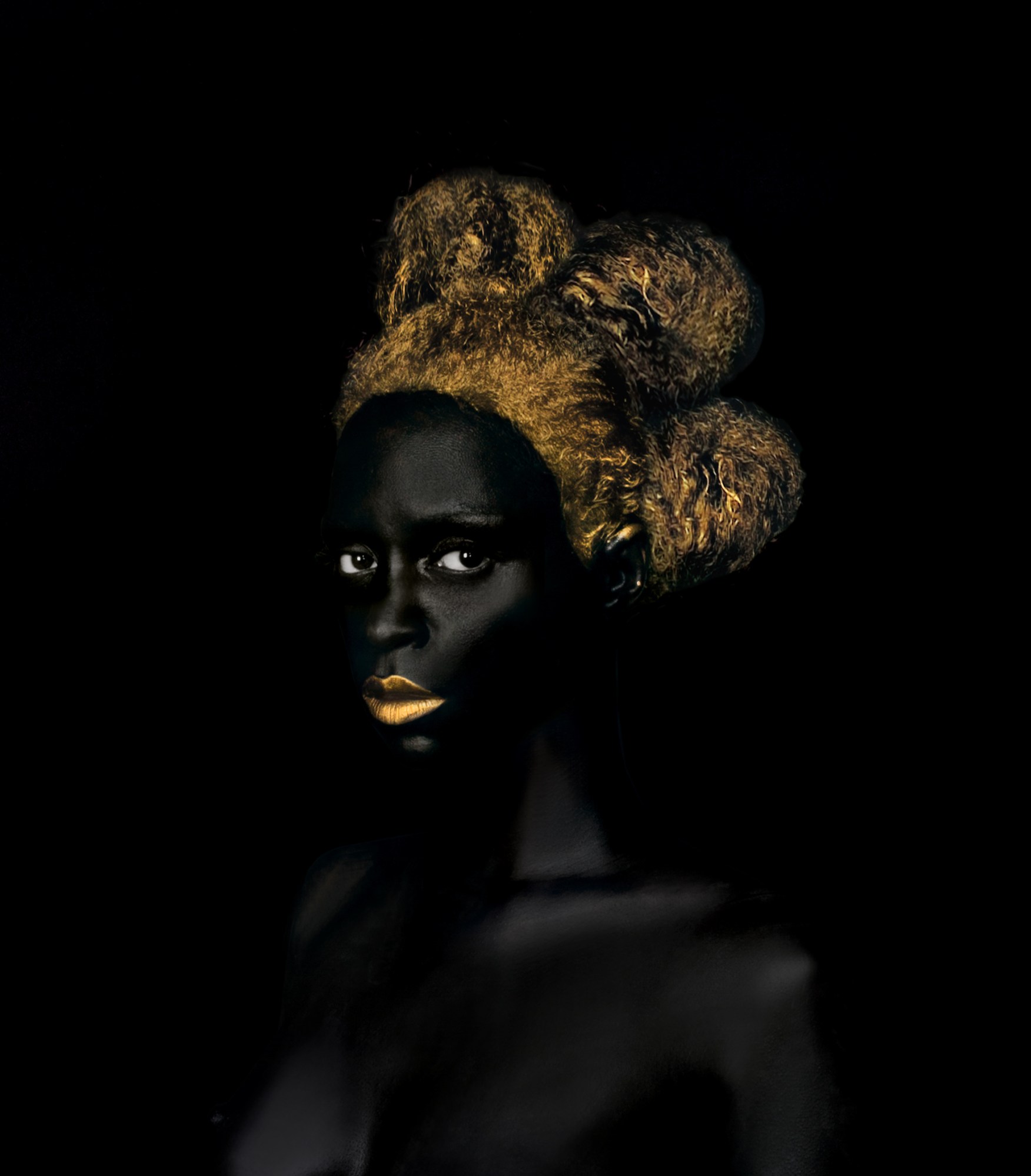At only 29, multidisciplinary artist Lina Viktor’s ability to suck onlookers into a world — specifically her own — is enviable. Her signature baroque style fuses a minimal palette of blue, black, white, and 24-karat gold with a technique so ornately beautiful that it’s easy to forget the rest of the color wheel exists. “I create boundaries so that I can explore infinitely within them. [It] sounds counter-intuitive but it’s imperative,” she says.
Viktor’s opulent aesthetic is difficult to miss. During her brief, burgeoning career she’s shown beside Andy Warhol, Takashi Murakami, and Jean-Michel Basquiat, and her works are currently on display in the Art of Jazz exhibition at The Cooper Gallery at Harvard University. Later this month, she’ll then return to that space later for another show, The Woven Arc. Needless to say, she’s extremely busy. Ahead of her new group show Hyperion — on display from May 6 to May 10, during Frieze New York — we caught up with the painter, sculptor, and performance artist to discuss the exhibition and how she’s using cosmic materials to create otherworldly masterpieces.
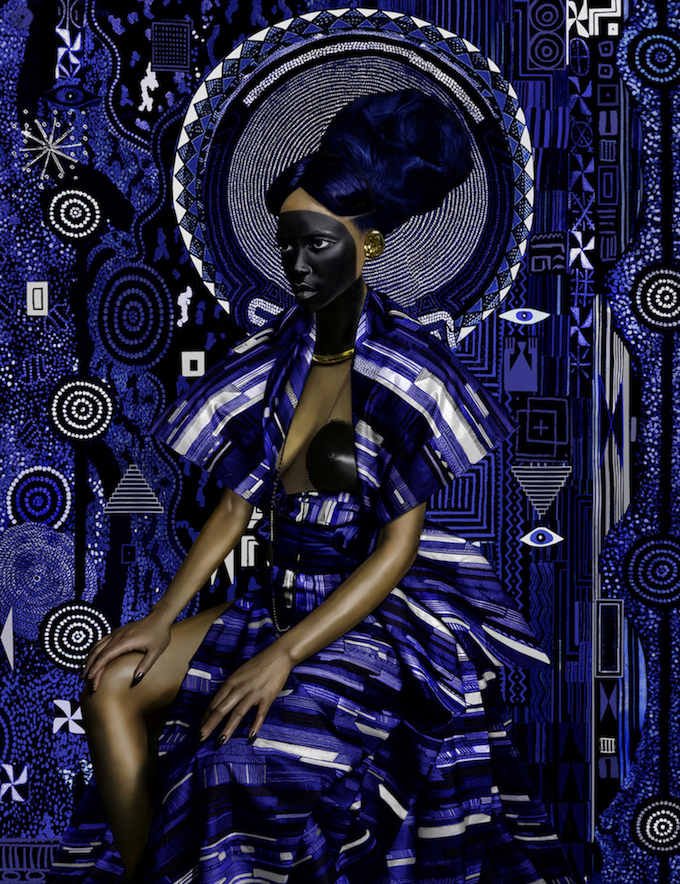
Tell me about your upcoming group show, Hyperion. What can we expect?
Hyperion is a group show exhibiting works from six London-based artists (I split my time between New York and London). All of the works are in conversation with the one another, but can also be viewed as isolated projects. All of the artists have very particular practices and crafts that are uniquely theirs, yet we all have a very similar viewpoint regarding the production and conceptual nature of our works. The exhibition will be introducing New York to Formationism — an artistic movement championed by fellow artists Walter & Zoniel, the curator Marine Tanguy, and myself.
What does “Hyperion” mean?
The curator, Marine, named the show after a John Keats poem, and he titled it after the Greek myth. The myth goes that Hyperion was one the the twelve children of Gaia and Uranus, and along with his siblings, he overthrew the tyrannical rule of Uranus. In Keats’ poem, Hyperion is left standing after all the gods have fallen. In this way Hyperion mimics the artist’s (or poet’s) role in today’s society. As Klaus Biesenbach recently said, “in the wake of civilizations and societies, art is the only thing that remains.”
How did you prepare for the show?
I worked — a lot and hard. It’s always a mad dash to the finish line. I am exhibiting two large-scale sculptural paintings — an abstract and a portrait that are in conversation with one another.
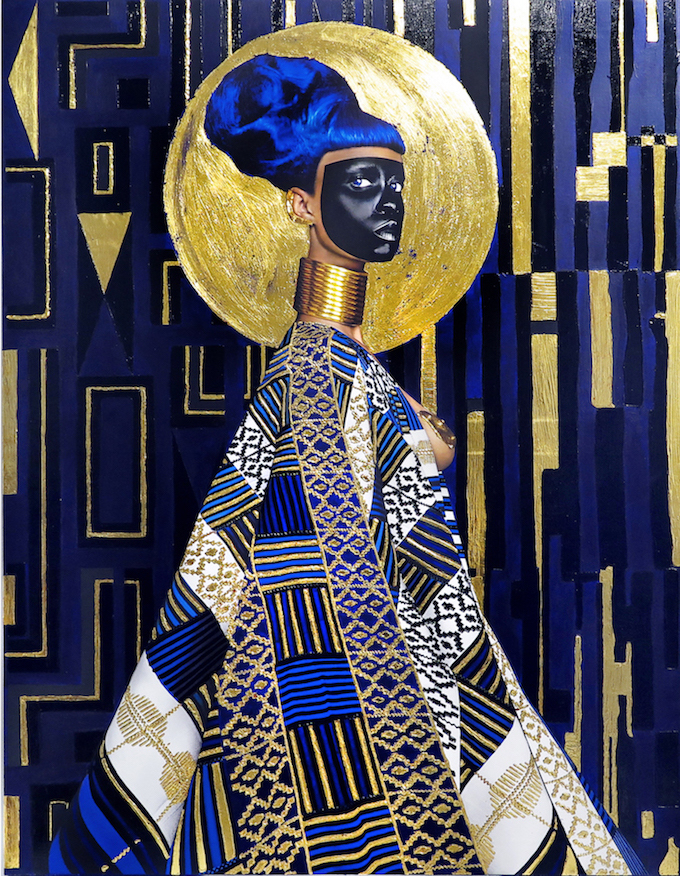
How, if at all, does your upbringing and family inform your work?
I grew up in Surrey and had the privilege of having a very unconventional education from ages 10 to 17. I went to an all-girls international Catholic boarding school in Kingston-Upon-Thames. From the age of 10, I was living pretty much alone in London — my parents had moved to Johannesburg and my sisters were both in school in the U.S. I will add that I chose to go to boarding school and was by no means forced (my mom hated the idea). I attended a very small school — only about 200 girls from 6th to 12th grade, but about 25 nationalities were represented throughout. Needless to say, I barely had any British or American friends. My best friends, who remain that till this day, were from Saudi Arabia, Taiwan, Finland, Mexico, Japan, and Korea.
It was surreal — living and working with young people from various cultural backgrounds and experiencing friendships that embraced and championed the differences and similarities. We spent three quarters of each year living together, so each friend became my family. It taught me how to respect all people from all backgrounds and allowed me to develop an inclusive and expansive worldview before I even understood what it meant to be a citizen of the world. Those formative years were the most important in my life — they formed me into the person I am today, and thus they directly inform the core subject matter within my work: transcendence.
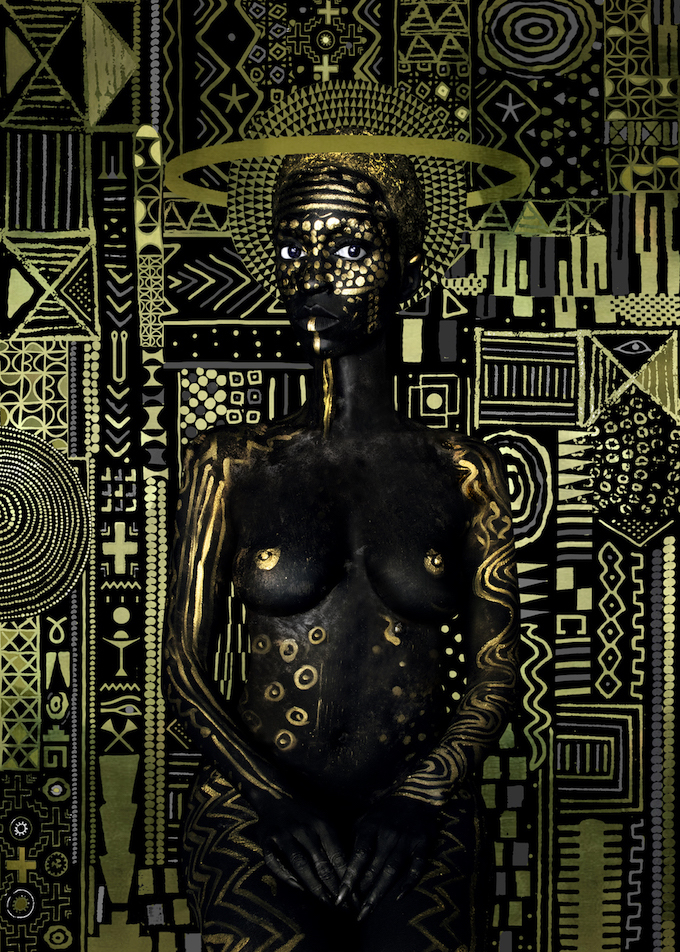
What’s the significance of your palette: blue, black, white, and 24-karat gold?
Gold is a signifier of power and otherworldliness. Humans share a storied and rich history with gold — and each appropriation of gold since its discovery relates to the minds of the civilization using it. We currently use it as a form of commerce, a trading tool, a measurement of monetary wealth. The Ancient Egyptians, Mayans, Aztecs, Babylonians certainly didn’t use it in this reductive way. Black and white are the extremities of the color spectrum — representing positive and negative space. Black contains within it all of the colors of the spectrum; it is the full absorption of light, while white is devoid of color; it is the full reflection of light. Majorelle blue, often referred to as Yves Klein Blue is likened to a void or an abyss, a color that overwhelms the senses. Together they create a powerful alchemy.
You paint and you sculpt and you use gold leaf. Are there other materials you’d eventually like to work with?
I use gold because of its cosmic origins. Like all elements and metals, it was created during the death of the star and has traveled across the seas of the cosmos to miraculously be deposited on our little planet. Any other metals or elements I add to my palette in the future will share a similar tale — and that will be why I use it. I am experimenting with a few other metals presently, with an intention to counterbalance the indestructibility of gold with something that is more unstable — something that degrades or corrodes. I am also investigating meteors.
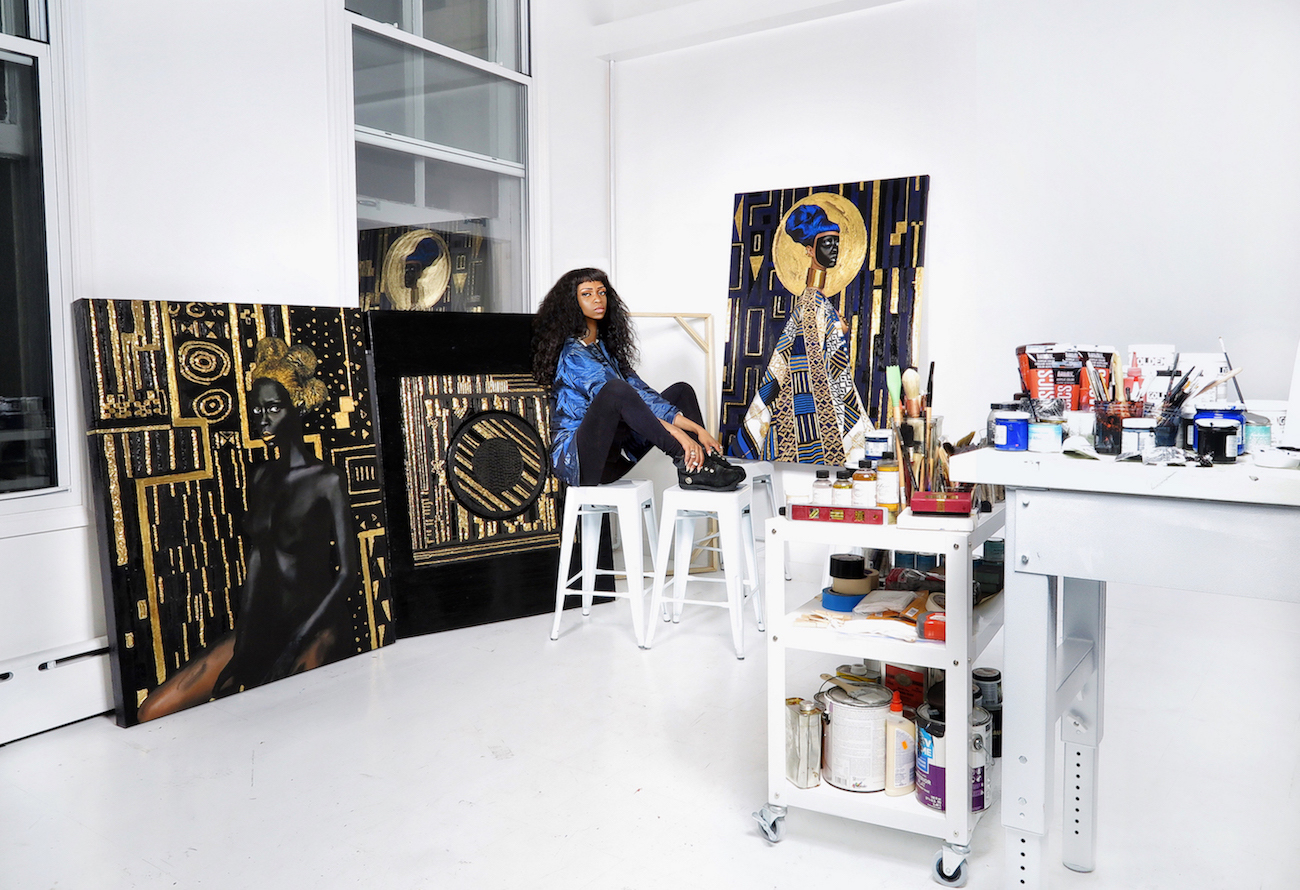
You’ve done a great deal of work with self-portraiture. What is it about that practice that keeps you inspired?
I don’t really consider them to be self-portraits. It’s my form and I use it as a vehicle to address the micro versus macro nature of the elements that make up life and our universe. The portraits are about abstraction, disidentification, transformation. I use myself because I am always present and it is a performance. But I feel no particular affinity or ownership over the final image as it is not about me or “self.” Different bodies of work are about different aspects of these motifs. The new black and gold series [in Hyperion] entitled The Body Black: Iron, Gold, Etheris about the unity on an elemental or subatomic level between our form, our bodies and the greater universe — the oneness of it all. We are all made up of the same elements; we are simply star matter.
Credits
Text Marquita Harris
Images courtesy Lina Viktor
